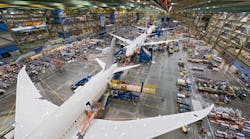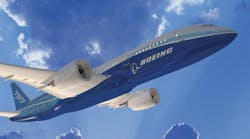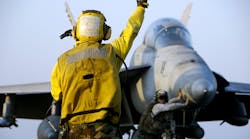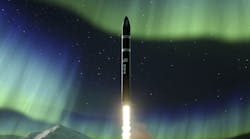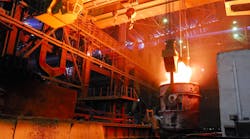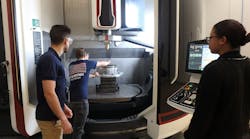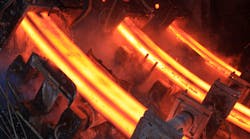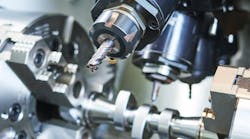Boeing Commercial Airplanes chose a site in West Jordan, Utah, in suburban Salt Lake City, to establish a new fabricating operation for horizontal stabilizer components for its 787-9 passenger jet. Boeing plans to refit and occupy a plant built by Masco, a cabinetry manufacturer, in order to produce the composite material parts for the tail structure of its new Dreamliner variant.
The Boeing 787 Dreamliner is a long-range airliner developed to improve the fuel-efficiency and passenger-comfort issues for commercial airliners. The new jet debuted in late 2012, and has endured a series of operational problems that have tarnished the publicity that surrounded its advanced design details.
Composite materials are critical to numerous components of the new jets. A horizontal stabilizer is an elevating surface on the tail of fixed-wing aircraft. It is a critical design detail providing equilibrium, stability, and control of flight.
The 787 is assembled at Boeing Commercial Airplanes plants in Everett, Wash., and North Charleston, S.C. Boeing’s existing operation in Salt Lake City is a 267,000-sq.ft. plant producing complex machined parts.
The Utah location chosen for the new fabricating operation is 20 miles away. Boeing said the proximity of the two plants would help to improve efficiency, from component fabrication to assembly, of the 787-9 horizontal stabilizer.
Boeing did not indicate the cost of the new plant, but it said it would refurbish the 850,000-sq.ft. building to complement its current operations in the area. About 100 new employees will staff the operation.
"The site we've chosen is an ideal location to add composite manufacturing capability focused on Boeing's key business strategies," stated Ross R. Bogue, vice president and general manager of Boeing Fabrication. "This new facility will provide a real competitive advantage in our supply chain by expanding our internal composite capabilities."
After a new series of problems (a battery fire, a fuel line leak, electrical issues) in early January, Boeing announced plans work with the Federal Aviation Administration to conduct a joint technical review of the 787. The jet builder stated it remains “confident in the design and performance of the 787. It is a safe and efficient airplane that brings tremendous value to our customers and an improved flying experience to their passengers.”
The 787-9 will be a design variant with an extended fuselage, allowing it to seat 250–290 passengers with a range of 8,000-8,500 nautical miles (the current 787 standard design is 210 passengers and 7,650-8,200 nautical miles.)
